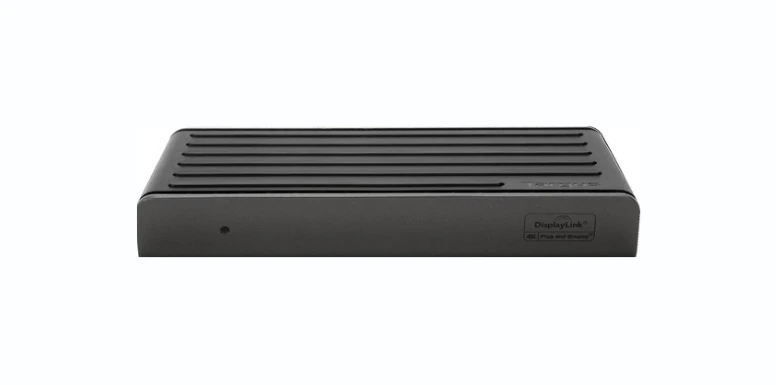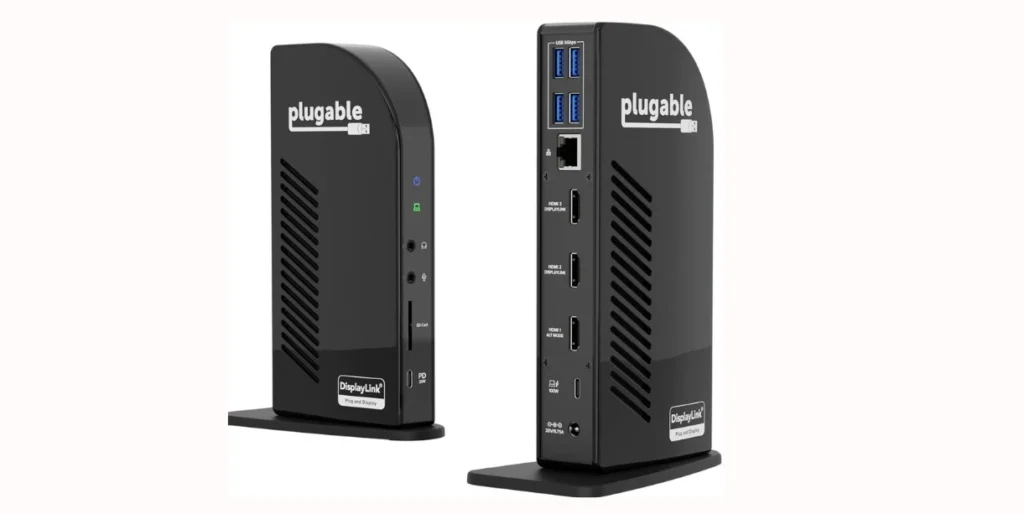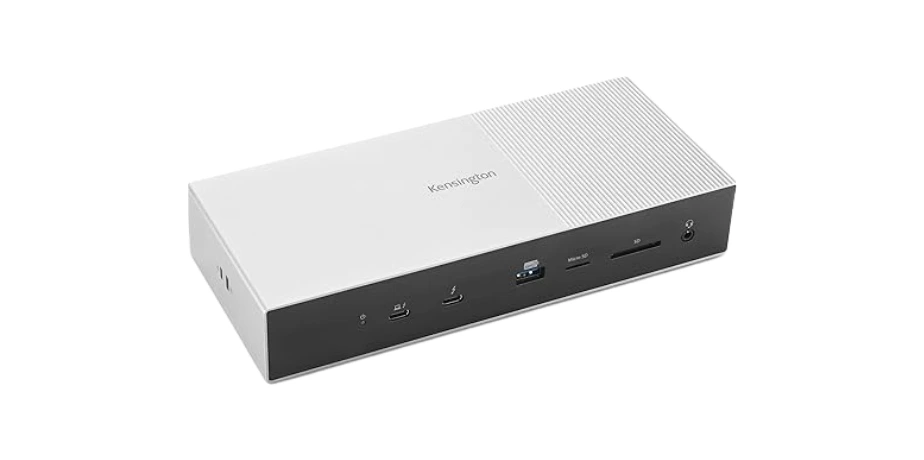Have you ever found yourself tangled in a mess of cables, switching endlessly between different screens, or struggling to find that one extra port you desperately need? We might be on the same boat here. Creating an efficient workspace setup is a quest for many of us, and finding the right tools to enhance productivity can feel like searching for the holy grail. Enter the Thunderbolt docking station, a knight in shining armor for our productivity woes. Specifically, when paired with dual-screen extenders, it transforms our workspace into an organized, multi-functional haven.
Understanding Thunderbolt Technology
Before we set sail on our productivity journey, let’s take a moment to understand what makes the Thunderbolt technology so special. Developed by Intel in collaboration with Apple, Thunderbolt is a hardware interface that allows the connection of external peripherals to a computer. The true magic lies in its speed—it can transfer data at a blazing rate of up to 40 Gbps. This means quicker file transfers, high-speed data exchange, and ultimately, a smoother work experience.
The Versatility of Thunderbolt
Thunderbolt isn’t your typical one-trick pony. It boasts a broad spectrum of capabilities:
- Data Transfer: High-speed data transfer makes it possible to transfer large files in seconds.
- Video: Thunderbolt supports video data, allowing for seamless screen extension without any lag.
- Power Delivery: It can deliver power to devices, leading to less clutter from additional power cords.
- Bidirectional Channels: The two pairs of 20 Gbps bidirectional channels mean unprecedented performance efficiency.
The Role of Docking Stations
At this juncture, you might wonder why we fuss so much over a docking station. Picture a docking station as a productivity powerhouse, acting as an intermediary that connects our laptop or desktop to a gamut of peripheral devices. It serves as the unsung hero in connecting multiple screens, a variety of USB devices, and maintaining an orderly workspace.
The Perks of Using a Docking Station with Thunderbolt
When paired with Thunderbolt technology, docking stations become practically indispensable. Here’s why:
- Expandability: Connect multiple devices such as keyboards, mice, drives, and printers with ease.
- Efficiency: Instantly switch between workstations without the need to unplug devices every time.
- Durability: Generally built to handle high-speed operations, ensuring long-term usage without hiccups.
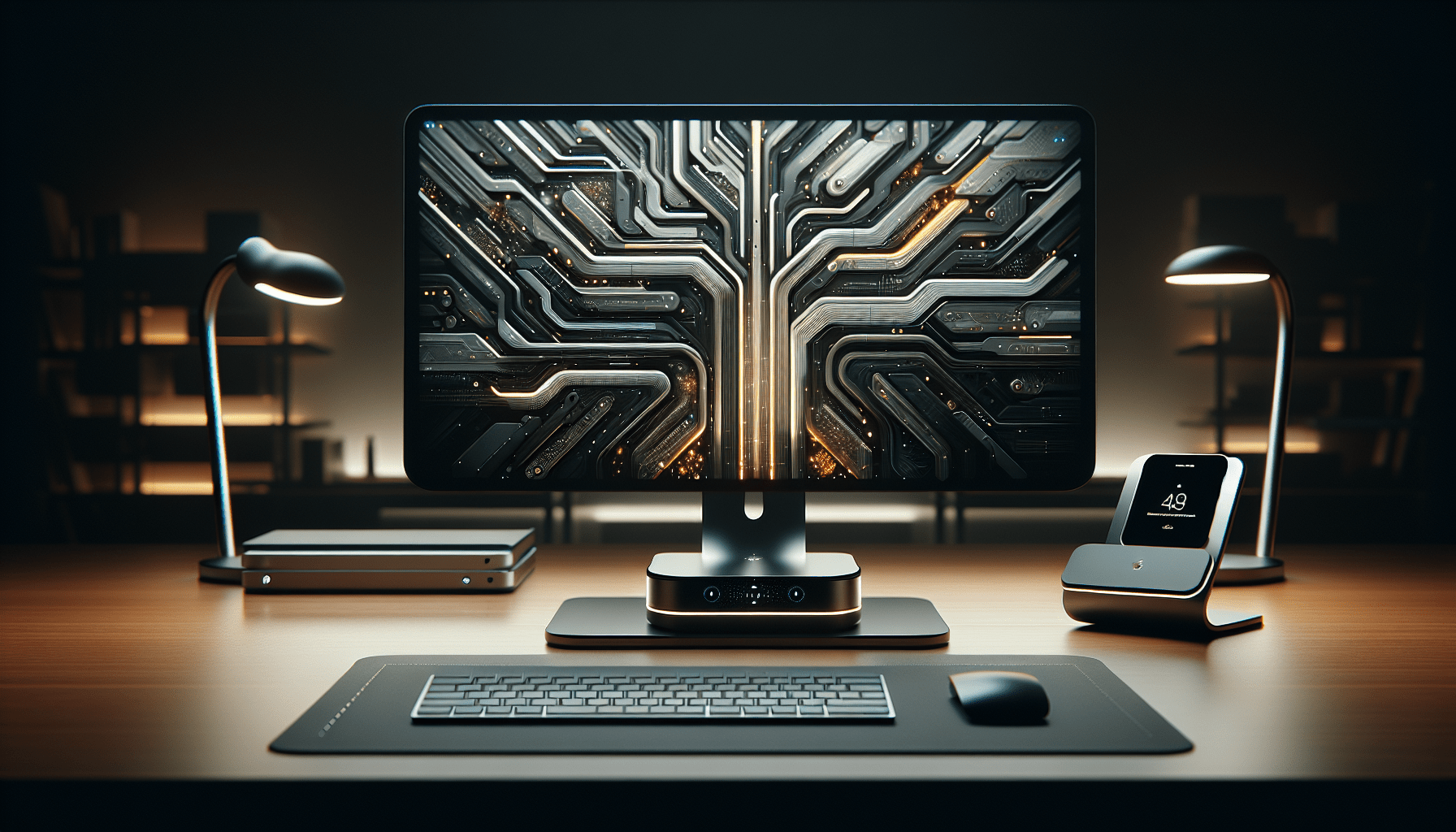
Enhancing Productivity with Dual-Screen Extenders
Escaping the confines of a single screen can dramatically increase efficiency. The incorporation of dual-screen extenders can alleviate cramped workspace woes, and when synced with a Thunderbolt docking station, the results speak for themselves.
Benefits of Dual Screens
Imagine the ability to drag a spreadsheet across two monitors or to research and draft documents simultaneously without the annoying alt-tab switch. Dual screens offer:
- Multitasking: Ease in managing multiple applications side by side.
- Improved Focus: Reduces the need to shuffle through tabs, enhancing focus.
- Customization: Freedom to arrange applications according to work requirements.
How Dual-Screen Extenders Work
Dual-screen extenders convert a single video output into multiple video outputs. It’s akin to projecting a single image onto multiple canvases, providing us the flexibility to distribute our creative workloads across a wider visual plane.
Setting Up Your Workstation
Now that we have the theory under our belts, let’s move on to the setup. A smooth workstation setup consists of aligning our Thunderbolt docking station with dual-screen extenders. Here’s a simple guide to help bring our productivity vision to life:
Choosing the Right Docking Station
When selecting a docking station, consider the following factors:
- Port Variety: Look for one with multiple HDMI/DisplayPorts, USB-C, USB-A, Ethernet, and audio jacks.
- Compatibility: Ensure the docking station is compatible with our device’s operating system and Thunderbolt version.
- Power Delivery: Choose a device that meets the power needs of all the connected devices.
- Resolution Support: For a clear and sharp display, opt for a station supporting at least 4K resolution.
Docking Station Comparison Table
| Feature | Model A | Model B | Model C |
|---|---|---|---|
| Port Variety | 2x HDMI, 2x USB-C, 4x USB-A | 1x HDMI, 3x USB-C, 2x USB-A | 3x HDMI, 1x USB-C, 1x USB-A |
| Compatibility | MacOS, Windows | Windows, Linux | MacOS, Windows |
| Power Delivery | 85W | 100W | 60W |
| Resolution Support | 4K | 5K | 4K |
Selecting the Best Dual-Screen Extenders
When on the hunt for the ideal dual-screen extenders, we should look for these features:
- Connectivity: Ensure compatibility with our docking station’s output options.
- Build Quality: Opt for a sturdy build to withstand everyday handling.
- Resolution Support: Match the resolution support to our docking station to maximize display quality.
Step-by-Step Setup
Ready to assemble the ultimate productivity powerhouse? Let’s put our plan into action:
- Connect the Docking Station: Plug the Thunderbolt docking station into the laptop or desktop.
- Attach the Monitors: Use appropriate cables to connect each screen to the docking station.
- Configure Display Settings: Access display settings in our device’s operating system and configure monitors to extend screens.
- Arrange Physical Setup: Position monitors ergonomically to reduce strain and improve overall usability.
Optimizing Workflow
Once the hardware is configured, it’s time to optimize our workflow. Reap the benefits by:
- Organizing Applications: Arrange applications on different monitors based on usage frequency and task relevance.
- Shortcut Mastery: Employ keyboard shortcuts to quickly move apps across screens.
- Ergonomic Setup: Adjust monitor height and angle for comfortable long-term usage.
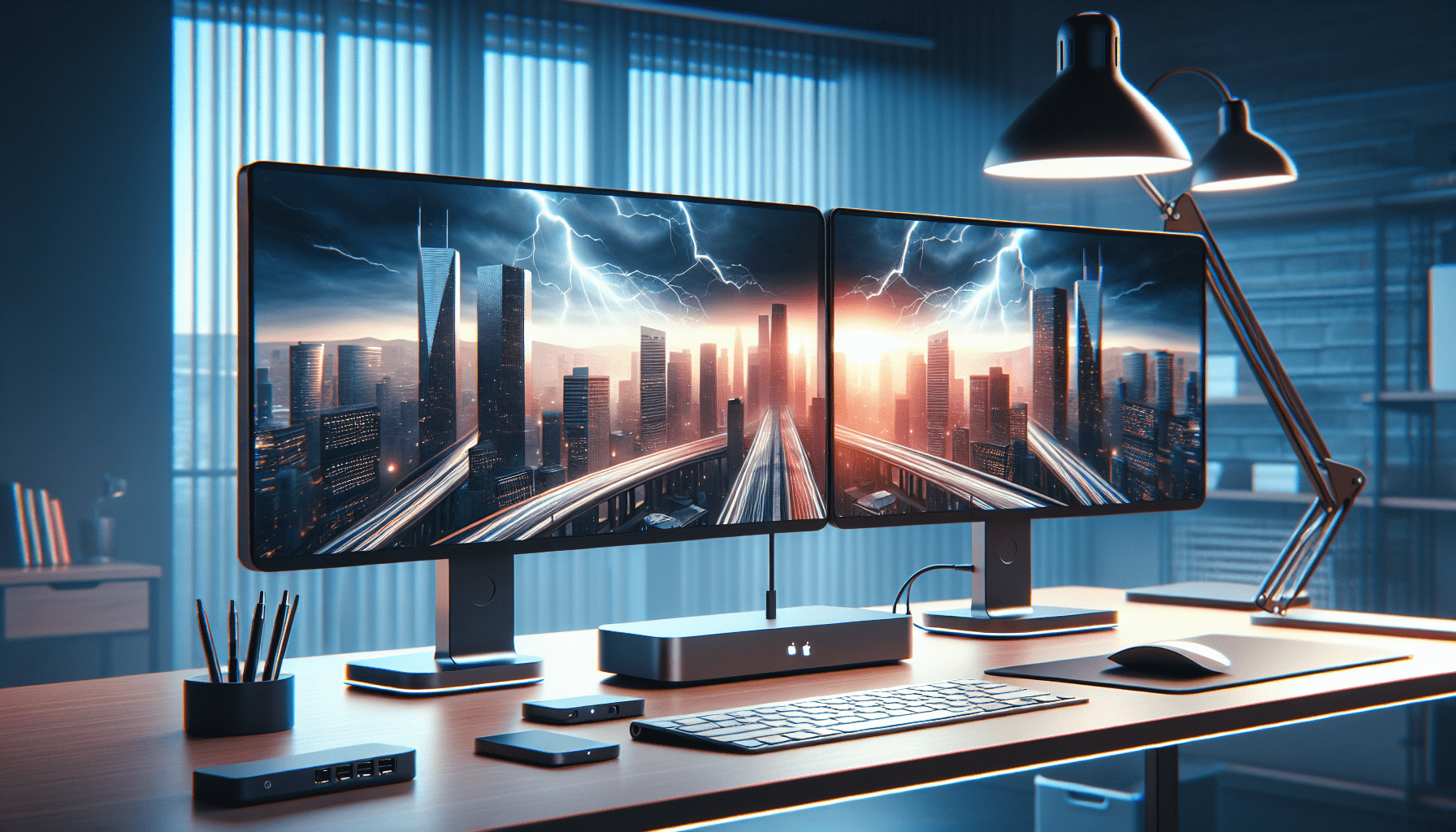
Troubleshooting Common Issues
Challenges might arise even with the best setups. Here, we address common stumbling blocks we might encounter.
Display Connection Problems
If screens fail to display properly:
- Check Connections: Ensure all cables are securely connected.
- Test with Alternative Cables: Swap cables to check if they are the issue.
- Review Display Settings: Verify that the correct display settings are enabled.
Resolution Errors
For display quality issues:
- Update Drivers: Ensure graphics card drivers are up-to-date.
- Resolution Settings: Double-check that monitors are set to the supported resolution.
Future-Proofing Our Productivity Setup
As technology evolves, so should our setup. It’s worthwhile to invest in a system that’s adaptable and scalable.
Considerations for Upgrades
When we contemplate upping our setup, keep these in mind:
- Backwards Compatibility: Choose equipment that’s compatible with both older and newer devices.
- Expandability: An upgradable docking station can accommodate additional devices in the future.
- Ecosystem Compatibility: Stick within a brand’s ecosystem to ensure seamless integration.
Conclusion
The journey to an optimized workspace is much like a thrifty road trip — filled with anticipation, minor hiccups, and a rewarding destination. By effectively combining Thunderbolt docking stations with dual-screen extenders, we unlock our potential for improvised productivity. We hope these insights and steps serve as a helpful map on our quest toward a more efficient, enjoyable work experience. May our desks be decluttered and our workflows seamless as we charge onward and aim for peak productivity!

